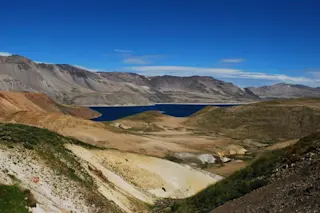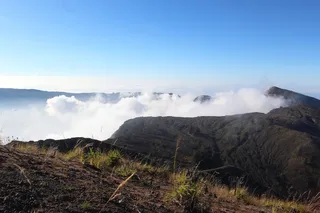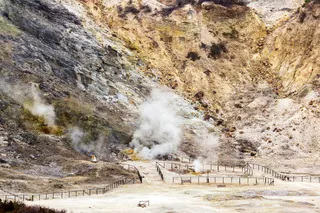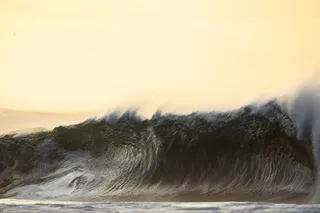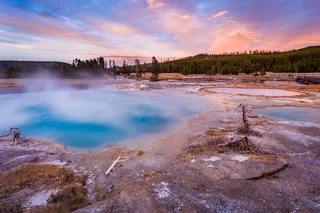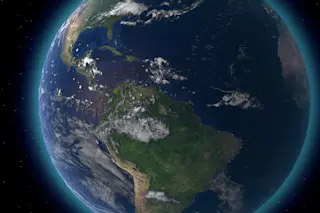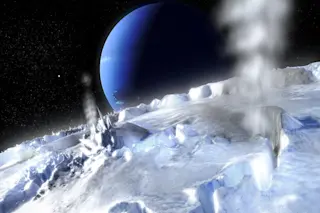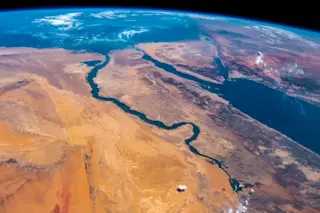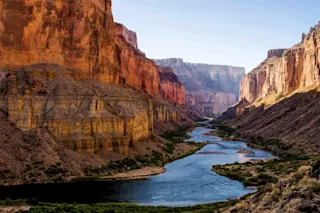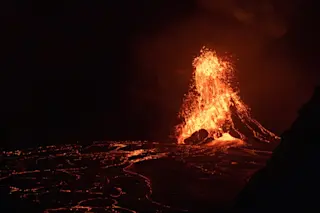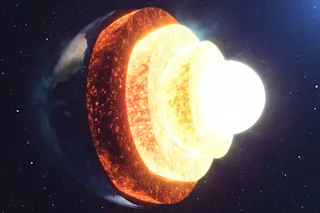The Laguna del Maule volcanic cluster in Chile, seen on January 30, 2010. Image: Roberto Herrera Pellizzari / Flickr. I think it is time to catch up with some of the rumblings going on in Chile. There aren't any actively erupting volcanoes right now (well, at least not in all certainty -- Chile's volcanoes can be very remote), but a number are showing signs that this could change. Laguna del Maule I haven't talked too much about the unrest at Laguna del Maule. This complex of volcanoes straddles the border between Chile and Argentina and is named after the lake that fills much of the collapsed 15 by 25 km caldera. Now, over the last few months, seismicity has been on the upswing at Laguna del Maule, with multiple earthquake swarms within the top 10 km of the crust under Laguna del Maule. What is most interesting is the deformation that is being noticed across the area -- in the central part of the lake, land is rising at 1.40 cm/month, while on the west side of the lake, the land is rising at 0.64 cm/month. Those might seem like small numbers, but for volcanic deformation, that is high enough to cause the SERNAGEOMIN raise the alert to Yellow (eruption possible in weeks to months) when combined with the increased seismicity. Predicting what kind of eruption would occur at Laguna del Maule is tricky as it is not known when the last eruption happened, but the most recent activity appears to be phreatic/phreatomagmatic explosion (driven mainly by water) and rhyolite domes and flows -- which show up impressively on this NASA Earth Observatory image. The latter would likely mean a significant ash component if the domes are similar to those that erupted in other parts of the Chilean Andes in recent years (Chaitén, Puyehue-Cordón Caulle). Lascar The only other Chilean volcano on Yellow alert status is Lascar in northern Chile. We've already seen some small explosions at the summit of the volcano, along with incandescence spotted during an overflight and material that had a surface temperature of ~600°C -- all of which mean that magma is close to the surface. However, over the past week, the steam plume at the summit, along with the incandensence, seems to be waning, with only wispy plumes reaching ~350 meters over the summit (barely visible today on the volcano's two webcams). That being said, Lascar is still pumping out significant sulfur dioxide -- topping out at over 3000 tons/day with an average of 940 tons/day. All in all, lots of unrest but not a lot of eruptive activity so far at Lascar. Copahue Well, after last December's brief explosions and related seismic unrest, the SERNAGEOMIN has lowered the status at Copahue back to Green -- meaning that activity at the volcano has returned to "background" levels. There is still minor seismicity at Copahue along with fumarolic activity at the summit, but nothing that suggests that more eruptions are in the works. Interestingly, the "Green" status in Chile can also mean an eruption in "months to years", which betrays just how active most Chilean volcanoes can be. Antuco I don't have much information on this, but John Seach relayed via Twitter the news that a pilot supposedly saw a small ash plume from Antuco, in south-central Chile. I checked out the Antuco webcam and beyond the vestiges of a wispy steam plume from the summit, it doesn't look like much is going on. The current status for Antuco is Green, so there haven't been any apparent signs of activity at the volcano. The last known eruption of Antuco was back in 1869. UPDATE 3:30PM April 22: Information from the VAAC (see comments) says that this report is likely due to a wildfire and not volcanic activity at Antuco.
Rumbling Chilean Volcanoes: Laguna del Maule, Lascar, Copahue, Antuco
Explore the Laguna del Maule volcanic cluster as seismicity escalates, raising alerts in Chile. What’s next for this volcanic hotspot?
More on Discover
Stay Curious
SubscribeTo The Magazine
Save up to 40% off the cover price when you subscribe to Discover magazine.
Subscribe

